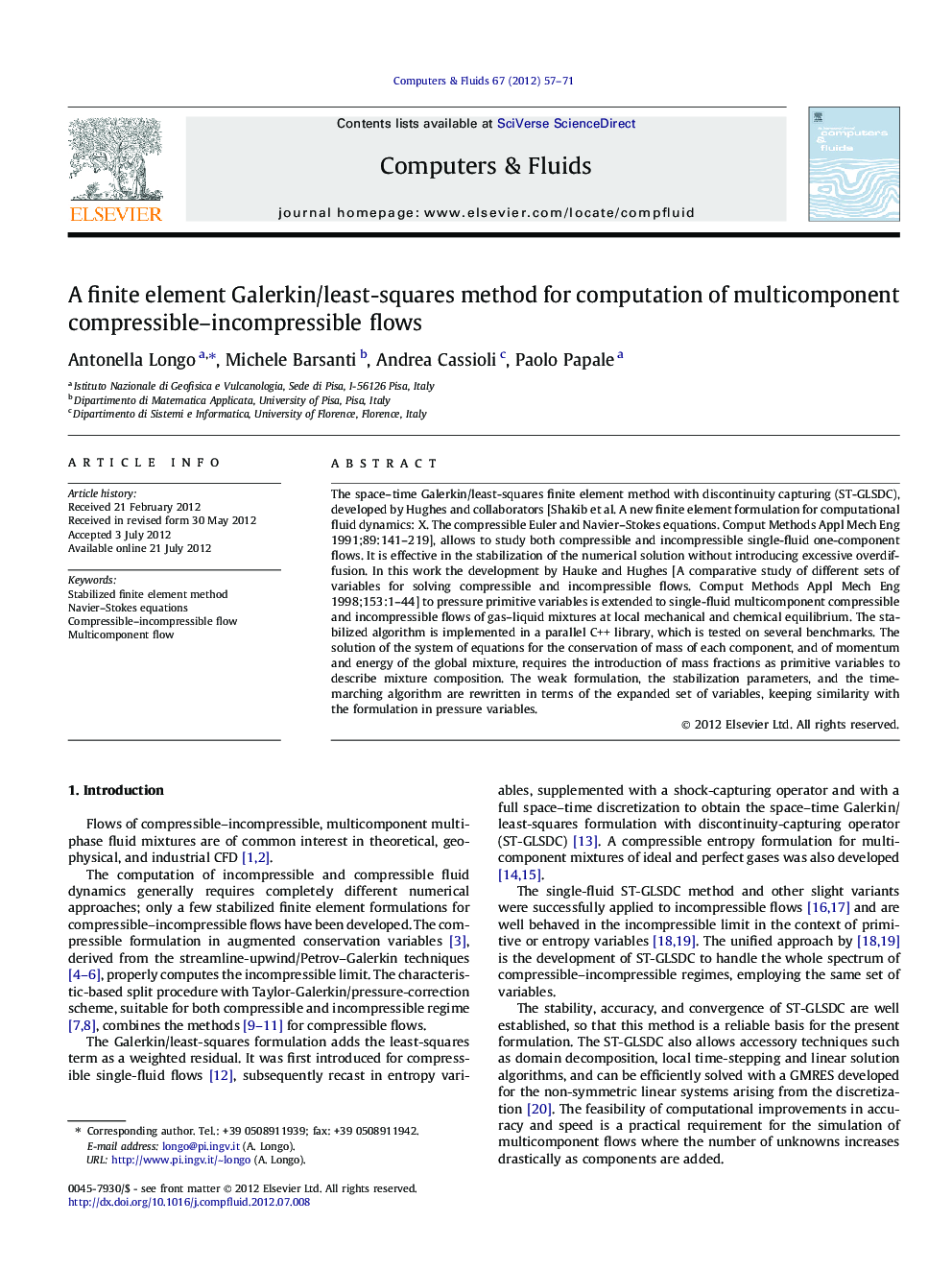| Article ID | Journal | Published Year | Pages | File Type |
|---|---|---|---|---|
| 762089 | Computers & Fluids | 2012 | 15 Pages |
The space–time Galerkin/least-squares finite element method with discontinuity capturing (ST-GLSDC), developed by Hughes and collaborators [Shakib et al. A new finite element formulation for computational fluid dynamics: X. The compressible Euler and Navier–Stokes equations. Comput Methods Appl Mech Eng 1991;89:141–219], allows to study both compressible and incompressible single-fluid one-component flows. It is effective in the stabilization of the numerical solution without introducing excessive overdiffusion. In this work the development by Hauke and Hughes [A comparative study of different sets of variables for solving compressible and incompressible flows. Comput Methods Appl Mech Eng 1998;153:1–44] to pressure primitive variables is extended to single-fluid multicomponent compressible and incompressible flows of gas–liquid mixtures at local mechanical and chemical equilibrium. The stabilized algorithm is implemented in a parallel C++ library, which is tested on several benchmarks. The solution of the system of equations for the conservation of mass of each component, and of momentum and energy of the global mixture, requires the introduction of mass fractions as primitive variables to describe mixture composition. The weak formulation, the stabilization parameters, and the time-marching algorithm are rewritten in terms of the expanded set of variables, keeping similarity with the formulation in pressure variables.
► Treatment of regimes from compressible to incompressible. ► Solution of multicomponent multiphase homogeneous flows. ► Extention by consistency of a previous method restricted to one-component flows. ► Adds weight fractions of the first n − 1 components as pressure-primitive variables. ► Stabilization terms are: the least squares and the discontinuity capturing terms.
